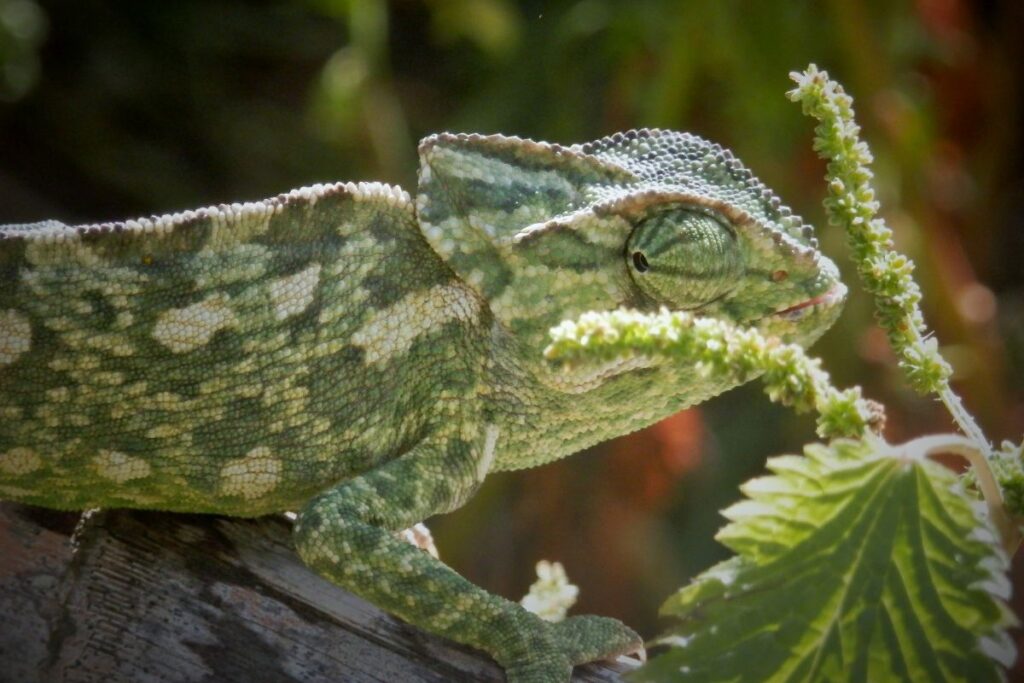So, here we are once again, with soaring daytime temperatures, heat waves, heat domes, heat bombs and (typically) zero rainfall for the next few months, or maybe even longer.
In such challenging climatic conditions, we’ve been attempting to keep our recently planted trees alive and harvest some summer vegetables and fruit. It’s fair to say growing conditions are perhaps best likened to a ‘summer dormancy’. Plants and trees are essentially hunkering down in a range of seasonal survival modes, as the sustained high daytime temperatures present a challenging environment for both plants and gardeners in what feels like a sort of ‘hot winter’. Some plants, such as the indigenous Sea Squill bulbs (Urginea maritima) quit the summer scene altogether, by going underground before reappearing in the autumn to flower spectacularly, naked and without leaves, in the cooler, wetter months.
Mulch to the rescue?
Mulches are loose coverings or sheets of material placed on the surface of soil. According to the Royal Horticultural Society (UK) there are several benefits to mulching depending upon the type of biodegradable material used. One key aim for us was to keep the soil surface covered over the summer to retain any moisture and limit weed growth.
Nature’s free mulching system (NFMS)!
In the summer heat, regular leaf drop from the Bitter Almond, Mallow and mature Carob trees falls directly onto the ground and our five raised no-dig vegetable beds. Any carob pods are removed and added to our four compost / hot bins. Surplus leaves are easily gathered up and stored in circular wire baskets to create leaf mould for ‘re-mulching’ vegetable beds and our trees later in the season. Essentially the aim is to increase levels of biomass on site and in the long term by planting indigenous trees, we are trying to create conditions like those found in a pocket forest, and in permaculture terms, establish a sustainable ‘edible ecosystem’.
Biodegradable mulch layers, if applied deep enough, can also help to protect plant roots from extreme temperatures, encourage beneficial soil organisms, and over time increase levels of soil organic matter. A thick mulch layer is typically 7.5cm / 3 inches thick (organic means ‘derived from living things’).
Earlier in the year, it’s fair to say we let nature do her thing over on our fields, to attract the maximum numbers and range of pollinators. Using permaculture design techniques, we incorporated several indigenous trees and shrubs, including Tree Mallows, which as their name suggests, grow very tall with many reaching over seven foot in height, whilst providing early season ‘distraction foliage’ for any pests to eat, rather than our leafy vegetable crops.
The Tree Mallow’s pink/purple flowers are also very attractive to bees, which have trichromatic vision, which means they can perceive three primary colors: ultraviolet (UV), blue, and green. This is why flowers often appear more vibrant to bees than to us – as they’re emitting UV light that’s invisible to human eyes. Mallows thrive on most soils and are biennial, so they die back after flowering (and self-seeding) in their second year. They can be easily removed and don’t have a deep or invasive root system. The plants are also a popular habitat for Soldier Bugs (Spilostethus pandurus) known as ‘Suldat’ in Maltese.
Chop and drop & dead hedges
Other plants joining the Tree Mallow in our Spring-time pollinator haven, included the crimson French Honeysuckle (Sulla coronaria) the Swedish Coffee plant (Astragalus boeticus aka yellow milk vetch), Borage, Crown Daisy (Glebionis coronaria) along with both the Giant and Common fennel, several thistle species and nettles – lots of them. When cut to the ground, the dried string-like qualities of nettle stems means it possible to make hand rolled ‘bales’ and these were used to then form raised borders around all our olive trees, with a further deep mulch layer of almond, olive carob, Mallow leaves and Aleppo Pine needles added in afterwards.
Some of the thicker stem sections of the Fennel, Crown Daisy and Mallow were also used to create ‘dead hedges’ to reduce wind damage across the site and help retain layers of mulch. We don’t carry out strimming on our fields, as this potentially could harm local wildlife and once set up, the mulched spaces along with some log / reed (qasab) and leaf piles (given the fancy name of a ‘Hibernacula’) will provide ideal winter habitats for our resident Maltese wall lizards, skinks and Sicilian shrews. The tall Mallow stems are also popular sites with both chameleons and Egyptian grasshoppers.
Some of the ‘cut and come again’ fresh nettle plants ended up with our chickens in their runs at ‘Cluckingham Palace’ and ‘The West Wing’. Several further batches of young nettles were turned into a free, stinky, nitrogen rich, home-made organic liquid plant feed and compost activator.
This article was written by Simon & Mary Wallace + their chickens, Qala, Gozo for South East Essex Organic Gardeners where you can find previous Gozo Growing features.
References / further reading
‘Permaculture is an ecologically sound approach to providing for our needs, including our food, shelter and social structures. It is based on co-operating with nature and caring for the Earth and its people’. (Source: ‘Permaculture in a Nutshell’ by Patrick Whitefield, Permanent Publications, 9th edition 2017).
Summer in the mediterranean garden: survival strategies – Mediterranean Gardening Association Portugal
